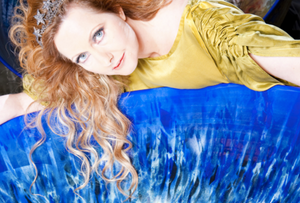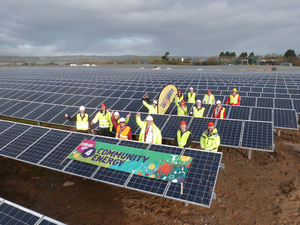Fashion is Broken! Julianne Moore, Patagonia and the Rise of Slow Fashion!

Julianne Moore attends the “Cafe Society” premiere and the Opening Night Gala during the 69th annual Cannes Film Festival at the Palais des Festivals on May 11, 2016 in Cannes, France.
It’s spring! Once again the seductive world of high fashion has burst into showy, look at me bloom, like a prize rose at the Chelsea Flower Show. Everywhere we look there are alluring images of the twinkling, ‘killer’ looks we are told we must buy: a waterfall of ruffles; more is more, granny’s attic grunge; flower power; mirror, mirror seventies glam; bright pops of clashing, paint box colours and even the 90s, Miss Moss and her shifts and Wellingtons are back again. Haven’t we seen it all before?

Julianne Moore attends the “Cafe Society” premiere and the Opening Night Gala during the 69th annual Cannes Film Festival at the Palais des Festivals on May 11, 2016 in Cannes, France.
Isn’t it time for a slow fashion revolution? We think the mainstream fashion world and press is hopelessly out of step with the public. It’s all so fake and carefully controlled. Look at Julia Roberts rebelling by kicking off her high heels! While Julianne Moore, the highly regarded international film star has just appeared at Cannes wearing certified, ethical, conflict free emeralds from Chopard’s Green Carpet Challenge Collection. This would have been unthinkable even five years ago. Julianne says she is ‘lucky’ to wear jewels that are both beautiful inside and out and fairmined. She went further adding, “I love emeralds and Chopard jewellery, and am so fortunate to partner with Chopard on their Journey to sustainable luxury. Simply wearing jewellery is a luxury, but knowing that the stones and the gold have been ethically sourced and mined makes the experience truly valuable. I am so impressed by Caroline Scheufele and her dedication to sustainability – she is truly a pioneer in this area. Lucky me – to wear jewellery on the red carpet that is beautiful both inside and out!” The times they are a changing, go Julianne and start wearing slow luxury couture too!
The Future of Fashion is Fair-trade, Ethical and Slow!

Alison Jane with Lisa Douglas at the Patagonia Make to and Mend Van in Spitalfields London
The future of fashion is fair-trade and all about making beautiful, highly desirable, high quality fashion from organic cotton, silk and stunningly luxurious eco tech fabrics from waste materials. And when a button falls off or a zipper busts, you don’t throw it away, you learn to sew, and make do and mend as championed by Patagonia’s tech fashion traiblazers, who conjure up kaleidoscopic, desirable jackets from consumer waste with a lifetime guarantee that would make your granny proud.

Let’s Get Back to Basics Says Patagonia and Mend Clothes That Can Be Worn Again
So, let’s pause for a moment, and dare to think the impossible. How about not buying any new clothes this season? How about not buying a dress or coat that comes without a lifetime guarantee? This is the radical, back to basics idea put forward by Patagonia – the California based ethical clothing company and their Worn Wear campaign coming to a farmers market, town square or university new you. Find out where the Patagonia Worn Wear Van Will Be Next
Thrift and Make Do and Mend Can Equal Sublime Glamour
This not a new idea. Throughout history, there have been times when resources were scarce, such as the era of the Second World War, and yet thrift and the human desire to still look glamorous and beautiful produced one of the most dazzling and heightened eras of glamour and allure. Just look at the film icons of this time such as Ingrid Bergman and the redoubtable heroines in the wartime drama Home Fires with only their ration coupons and the power of red lipstick to look like goddesses. Look at Miss MoneyPenny, former Bond Girl , Samantha Bond – she never has a chignon or platform shoe out place.
It seems there are two camps in fashion right now. The first is the relentless merry go round of fast fashion, and its glittering, siren call to spend, spend, and spend again, with each new season. There is no regard or mention of the ever present threat of running out resources, polluting the planet or exploiting our fellow human beings for another on trend dress than can sell for less than a cocktail in a fashionable bar.

Neue London – Sustainable Made in London Fashion with a New York Twist
At the other end of the spectrum, there is fair-trade, conscious, slow fashion, which is growing both in popularity, and influence as it moves to clean up the not so achingly pretty business of high fashion through certified supply chains, trade not aide, localism, up cycling and organic cotton farming. It is also interesting to note that ethical fashion has really grown up and come of age. It is no longer fashion’s Cinderella. Gone are the primitive, unwearable, hair shirt collections of fifteen years ago, and in comes the mother of ravishing reinvention with breathtaking storytelling and fashion that embraces everything from flight of fantasy couture to New York minimalist chic. Our hot tickets and the designers to watch are – Atelier Tammam, Patagonia, Neue London, Christopher Raeburn, Bam and Victim Fashion Street. There is really no excuse not to dress ethically anymore.
So who will prevail? The slow or fast set? It is certainly an interesting time to be writing about fashion. So, amid this maelstrom of opposing ideas, Patagonia has taken the interesting step of asking its customers not to buy new clothes unless they really need to.
We’ve Never Had it So Good – The Consumer Credit Boom in the Sixties Led to Throwaway Fashion
Of course, this is not new. This is how it used to be, before the consumer credit boom of the sixties, when first world economies such as Britain and the US encouraged the public to consume and throwaway clothes in the midst of a wave of optimism and carefully orchestrated economic patriotism to stimulate the economy after six years of war. Then, it was all about rising hemlines, the Beatles and Harold Macmillan declaring ‘we had never had it so good’, and the throwaway culture of the last seventy years was born.

Sean Villanueva O’Driscoll on set in Northern Scotland for the next Worn Wear Film.
Now the cynics amongst you, could be forgiven for thinking that Patagonia’s stance is also a genius marketing campaign. The marketing director sits in his or her office in California, and asks, ‘ how can we build incredible customer loyalty and a sense of belonging to our high quality ethical brand? I know, let’s go out on the road and offer to repair our customers clothing free of charge, teach them how to sew and talk about how our awesome, sustainable, eco-friendly clothing really is built to last’.
Patagonia’s Worn Wear Campaign – Say No to Waste
Well, what’s wrong with that? Marketing that is honest, ethical and with proven benefit to society is surely the ideal. We live in different times. It is no longer viable to waste resources or send so much clothing to landfill. Patagonia offers a lifetime guarantee for its clothing and the Worn Wear Campaign reinforces the message that the company doesn’t produce throwaway fashion and therefore they are helping to reduce waste. So bang on message and probably far cheaper than an advertising campaign in the world’s glossy magazines that millennial consumers probably don’t read anymore. In the age of digital, brands can bypass traditional forms of advertising and talk directly to their consumers, hang out with them and create that magical sense of connection that makes a person stick with a brand their entire life. Today, the buzz mantra in marketing is about creating authenticity and experiences.
It doesn’t even have to be a piece of clothing from the cool California clothing who have certainly championed the idea that getting down and dirty in the natural world is cool and should be celebrated. You can take anything along that needs mending. In fact Patagonia are out and about in their photogenic, up-cycled van, teaching the public all the skills our grandmother’s relied upon, such as mending or patching a tear in a jacket and how to lovingly sew on a button properly.

Sean Villanueva O’Driscoll on set in Northern Scotland for the next Worn Wear Film.
It’s fun, its friendly and from the stories on the Patagonia website, customers seem to love the engagement. Along the way, the roadshow has produced some poignant storytelling. There is the devoted husband sharing the story of his wife ebbing away from terminal breast cancer who couldn’t be parted from her treasured pink fleece – to the cheeky chap who asked for the seat of his Patagonia trousers to be given a new lease of life after taking his trousers on many adventures; so far, so heart-warming.
Reader I can’t sew for toffee and nor could my mum. In fact I was excused from the school sewing class. So, here I am standing in the square, next to the famous Spitalfields Market, in the shadow of the Gherkin, hoping that Martina, on of the Patagonia seamstresses might be able to teach me how to sew on a button properly. There is something reassuring and time honored about the whir of the sewing machine as Martina, head down, carefully repairs a tear in a Patagonia jacket that belongs to Theo, who spends a lot of time getting wet uncovering the systematic pollution of our rivers and streams that are now largely hidden below London’s bustling streets.

Theo, the Super Hero Of London’s Waterways Gets His Jacket Repaired
The look on Theo’s face says it all. He seems genuinely thrilled that his beloved, fourteen year old Patagonia jacket can be successfully repaired and continue to keep him warm and dry when he is out and about campaigning for a clean and unpolluted river Thames, as the superman of our waterways – waterkeeper.org.uk We also note that his much worn, fourteen year old jacket isn’t showing any signs of age at all. It looks as good as new. It’s all about the quality and that throws up an interesting question.
Is sustainability a luxury only the well off can afford? How do we teach people that buying cheap clothes is a false economy, as they are engineered to fall apart, sending the consumer back for more and more? Fashion is such an emotive subject. When a well-known cathedral to commerce declares ‘ I shop therefore I am’ – you know the world is a bit like The Titanic – heading for disaster, but determined to party hard until the ship goes down. There are no easy answers.

Martina, A Patagonia Seamstress Repairs a Torn Jacket
According to Wrap, every year we throwaway £140 millions pounds worth of clothing that ends up in landfill. As it rots amongst a sea of multi-coloured refuse, it certainly doesn’t create an achingly beautiful fashion spectacle worthy of Paris, New York, London or Milan.
This is the depressing, nonsensical, completely unsustainable reality of trend and season led, fast fashion. The buy it, wear it, chuck it out and buy something new mentality which is fed by a unremitting, global juggernaut of big business, alluring advertising, paid celebrity endorsement and a media that reinforces the message that we really have nothing to wear, because they don’t dare upset their advertisers, and more importantly, because they are bankrupt of ideas. As one former fashion editor commented at a recent debate on how to make fashion more sustainable at Winchester School of Art (WSA), ‘ the fashion industry is broken, we need a new model’.

Eleanor Tomlinson – A British icon in the making from Alison Jane’s Queen’s Jubilee Fashion Feature Wearing an Atelier Tammam, Sustainable Couture Gown, Embroidered with Banana Fibre. Styled by Journalist Alison Jane Reid.
So when you read a story in a fashion magazine or newspaper and it screams ‘rock this dress’; ‘the capsule wardrobe that will save your life’ (we love that one); or ‘this season’s must have, sheer LBD’. Increasingly, there are lots of smart people who are not buying into the mirage that is fast fashion anymore. Not the millenials who subscribe to organic box schemes and buy fair-trade chocolate and Pukka organic tea. Not the hot shot female lawyer and mother of two who now gets her hair done at an organic salon and shops for Made in Britain and small ethical fashion labels online. Or my bright university interns graduating in journalism, multi-media and English this summer who buy their fashion from vintage markets and the new wave of affordable, indie designers who are all over instagram.
So, go and get re-acquainted with your wardrobe and admire the twenty little black dresses or the ten jackets you already own and ask yourself this? Which one shall I wear to go out and confidently paint the town sustainably emerald tonight? Maybe the dress you were wearing when you met your husband when your Internet date stood you up; the military coat you discovered in a flea market as a student down and out in Paris; or the jacket that took you to the top of Kilimanjaro and safely back down again.
After all, wearing a garment with a history and stories to tell is far sexier than wearing a piece of clothing that elicits no memories at all. The writing is on the wall for fast fashion that isn’t as beautiful on the inside as it is out.
Alison Jane is the founder and Editor of Ethical Hedonist Magazine, a magazine about slow luxury and sustainable living. She is a former feature writer and celebrity fashion director at The Times, The Lady and You Magazine.
Info about Julianne Moore at Cannes
Film actress Julianne Moore photographed at The Cannes Film Festival wearing Chopard validated Zambian emeralds from Gemfields set in fairmined gold from the debut green carpet collection. For more information on Chopard and their sustainable, slow luxury collections go to their website – www.chopard.com and here for www.gemfields.co.uk






